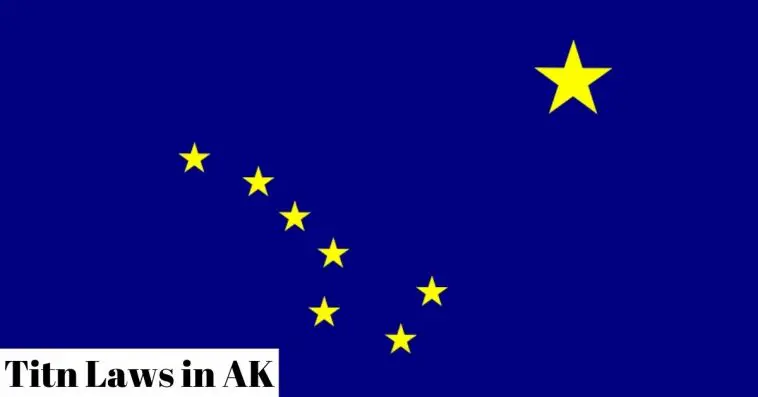Many people think that it looks great to have tinted windows on their car. The tinting adds to the aesthetics of the car but also contributes to enhanced privacy.
When the tinting is too dark, however, it could create a hazard on the road. Blocking out too much light increases the risks of causing an accident, which is why there are several laws that prohibit certain levels of tinting on cars.
In Alaska, the laws surrounding the topic of window tinting are somewhat stricter compared to some of the other states. In this article, we explore the Alaska window tint laws you should know about.
I consider the maximum darkness allowed for tint films and consider whether reflective surfaces are allowed on cars.
TABLE OF CONTENTS
Are You Allowed To Have Tinted Windshield And Windows In Alaska?
While Alaska is one of the stricter states in the US, note that it is not considered illegal to tint your windows. You are allowed to tint your rear windows, as well as the side windows in your car.
A small part of the windscreen may also be tinted. While the laws in Alaska allow for tinting, you should be aware of restrictions. When you add a tint that is too dark, you run a risk of being fined.
What Is The Darkest Tint You Can Legally Get In AK?
The darkest level of window tint that may be apple to both passenger cars and multi-purpose vehicles is 60% darkness. This means the tinted window need to allow a minimum of 40% light into the vehicle.
The restriction only applies to the rear windows in the vehicle. When tinting the front windows, the same darkness level may not be used. A much higher level of light transmission is required for front side windows that are tinted.
Is 20 Tint Illegal In AK?
Even though several states have regulations that allow for a tint of 20% light transmission, this is not the case with Alaska.
In this state, vehicles are permitted to have any window tinted to the level where only 20% of light can transmit through the film.
Can You Get Pulled Over For Tinted Windows In Alaska?
Due to the higher restrictions placed on window tinting laws in Alaska, people are generally more likely to get pulled over for tinted windows in this state.
The restrictions placed on the tinting of windows make it relatively easy for cops to see when the film applied is too dark. The cops may pull you over if they notice that your tinted windows are above the darkness level that is allowed by Alaska law.
How Much Is A Tint Ticket In AK?
If you are pulled over for tinted windows, the first step would be for the cops to determine if their judgment was accurate.
The cops need to analyze the tint and determine if it falls within the allowed level permitted by law. If the cops find that the tint is too dark, then a fine may be issued to you. If you have a medical exemption, be sure to present this to the cop during the investigation.
A fine can run up to about $300 when your tinted windows are too dark, and you have no medical exemption. You will be required to fix the tinting on the windows.
The darkness needs to be reduced within a prescribed time period. A surcharge of $10 is charged if you fail to fix the tinting on your windows within the time given by the cops.
Window Tint Darkness In Alaska
The darkness of window tinting is an important factor to consider. When the tint film pushes too much light out, it can be difficult to see from the inside of your car.
This is why Alaska has strict rules that need to be followed when tinting your car’s windows. Below, I consider the current restrictions that are in place for both passenger and multi-purpose vehicles.
For Passenger Vehicle
- Windshield: Only the upper five inches of your windshield may be tinted. A reflective tint may not be used in this part.
- Front Side Windows: At least 70% of light should be allowed to transmit through the film.
- Backside Windows: Maximum light that may be blocked out is 60%.
- Rear Window: 40% or more light should be able to transmit through the tint.
For MPV (Multi-Purpose Vehicle)
- Windshield: A five-inch line at the top region of the windows may be tinted with a non-reflective film.
- Front Side Windows: A minimum of 70% light should be allowed to penetrate through the tint film.
- Backside Windows: 40% or more light should pass through the tinted window.
- Rear Window: 40% of light or more should transmit through the window.
Window Tint Reflection In Alaska
Reflective coatings are often combined with window tint for aesthetic purposes. I share the current regulations in Alaska regarding these coatings.
For Passenger Vehicle
- Front Side Windows: Mirror and metallic coatings are not allowed.
- Backside Windows: Mirror and metallic coatings are not allowed.
For MP (Multi-Purpose Vehicle)
- Front Side Windows: No mirror or metallic coatings may be applied.
- Backside Windows: No mirror or metallic coatings may be applied.
How Do You Get A Medical Exemption For Window Tint In Alaska?
Alaska is one of the few states that allow some people to obtain a darker tint than what is allowed according to the laws and regulations. It should be noted, however, that exemptions are only provided to patients with certain medical conditions.
To obtain a medical exemption, you need to be diagnosed with the condition that is considered eligible for a darker tint according to the laws in Alaska.
The exemption letter needs to be written out by a licensed physician in the state. A letter from a physician licensed to practice in a different state will not be considered valid. These exemption letters should be renewed on a yearly basis, as they are only valid for a period of 12 months.
Conclusion
Alaska has strict limitations placed on the process of window tinting. Failure to comply with these regulations can result in a penalty of $300, as well as an additional surcharge if you do not fix the tint within a period provided by the cop issuing the ticket. Medical exemptions are allowed, but only in qualifying cases.




